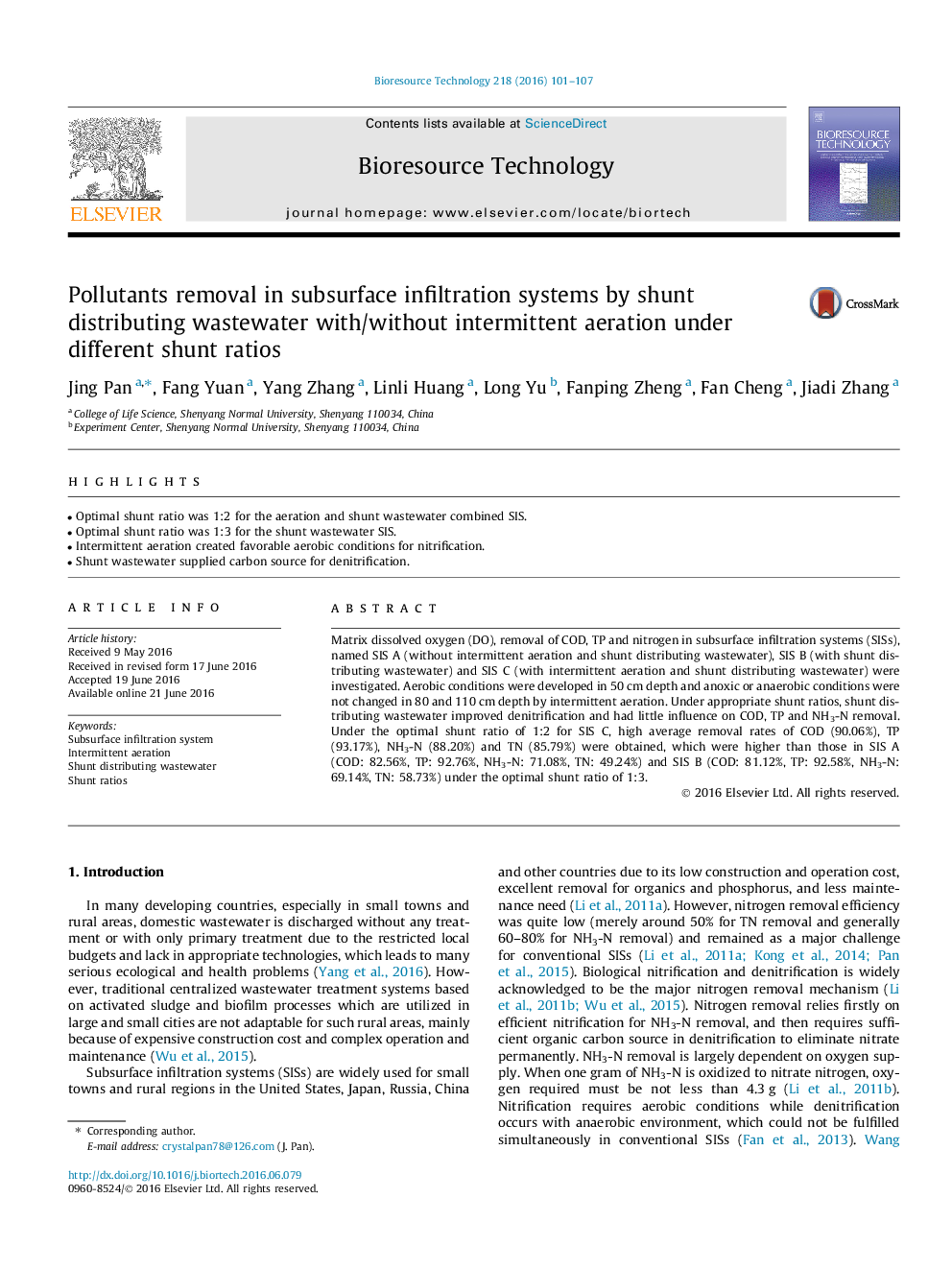| Article ID | Journal | Published Year | Pages | File Type |
|---|---|---|---|---|
| 7070231 | Bioresource Technology | 2016 | 7 Pages |
Abstract
Matrix dissolved oxygen (DO), removal of COD, TP and nitrogen in subsurface infiltration systems (SISs), named SIS A (without intermittent aeration and shunt distributing wastewater), SIS B (with shunt distributing wastewater) and SIS C (with intermittent aeration and shunt distributing wastewater) were investigated. Aerobic conditions were developed in 50Â cm depth and anoxic or anaerobic conditions were not changed in 80 and 110Â cm depth by intermittent aeration. Under appropriate shunt ratios, shunt distributing wastewater improved denitrification and had little influence on COD, TP and NH3-N removal. Under the optimal shunt ratio of 1:2 for SIS C, high average removal rates of COD (90.06%), TP (93.17%), NH3-N (88.20%) and TN (85.79%) were obtained, which were higher than those in SIS A (COD: 82.56%, TP: 92.76%, NH3-N: 71.08%, TN: 49.24%) and SIS B (COD: 81.12%, TP: 92.58%, NH3-N: 69.14%, TN: 58.73%) under the optimal shunt ratio of 1:3.
Keywords
Related Topics
Physical Sciences and Engineering
Chemical Engineering
Process Chemistry and Technology
Authors
Jing Pan, Fang Yuan, Yang Zhang, Linli Huang, Long Yu, Fanping Zheng, Fan Cheng, Jiadi Zhang,
